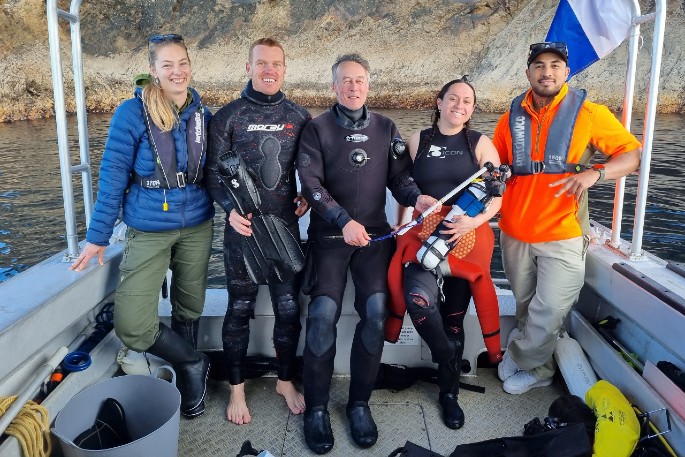This Content Is Only For Subscribers
New marine protection areas across the Hauraki Gulf/Tīkapa Moana/Te Moananui-a-Toi will take effect from Saturday, October 25, 2025, marking the next step in the Government’s plan to restore the health of one of New Zealand’s most significant marine environments.
The Department of Conservation will manage and monitor 19 new protected areas across the wider Gulf, including zones to the east of the Coromandel Peninsula.
DOC operations manager marine Kirsty Prior says this summer’s focus will be on helping people understand the new rules and boundaries.
“We’ve got a new team of marine rangers, community rangers and seasonal staff gearing up for summer. We’ll be heading to events, boat clubs, boat ramps and out on the water to chat about these new marine protections,” says Kirsty.
“We understand this is a big change for many in the fishing community, and we’ll be working alongside you as everyone gets familiar with the new boundaries and what they mean.”
Kirsty says the new protections will take time to bed in.
“This law is brand new. It will take time for practical changes to take place – such as updates to electronic chart-plotting systems and installing physical markers.
“These protections are very important. They will take some pressure off crucial underwater habitats such as productive reefs and sensitive sea floors. We’re giving space for marine life to thrive, and over time this will help contribute to a healthier Gulf with more fish for everyone.”
DOC’s marine protection team and support vessels are based in Whitianga, Warkworth, Auckland’s North Shore and the CBD. Their work includes education, compliance and monitoring of underwater habitats.
“Currently the team is installing signage at boat ramps and entry points, distributing protection maps to local businesses, and working with chart-plotter providers to update mapping systems,” says Kirsty.
“We expect updates to digital charts to happen as manufacturers are able. The installation of signs and marker buoys will roll out progressively over summer and into early 2026.”
DOC says its focus for now is on education and support, with compliance activity to increase gradually as people become familiar with the new boundaries. Patrols will include on-water checks and the use of drones and high-zoom CCTV to monitor activity.
Key details for the fishing community
High Protection Areas ban recreational and commercial fishing but allow authorised customary non-commercial fishing for purposes such as tangihanga or hui. Limited commercial ring-net fishing is permitted in two HPAs for six months of the year and will be reviewed after three years.
Seafloor Protection Areas restrict fishing methods that damage the seabed, such as trawling or dredging, but allow low-impact activities including line fishing, spear fishing and diving.
More than 94 per cent of the Gulf remains open to recreational fishing.
Maps and updates are available at www.doc.govt.nz/haurakigulfmarinepark



